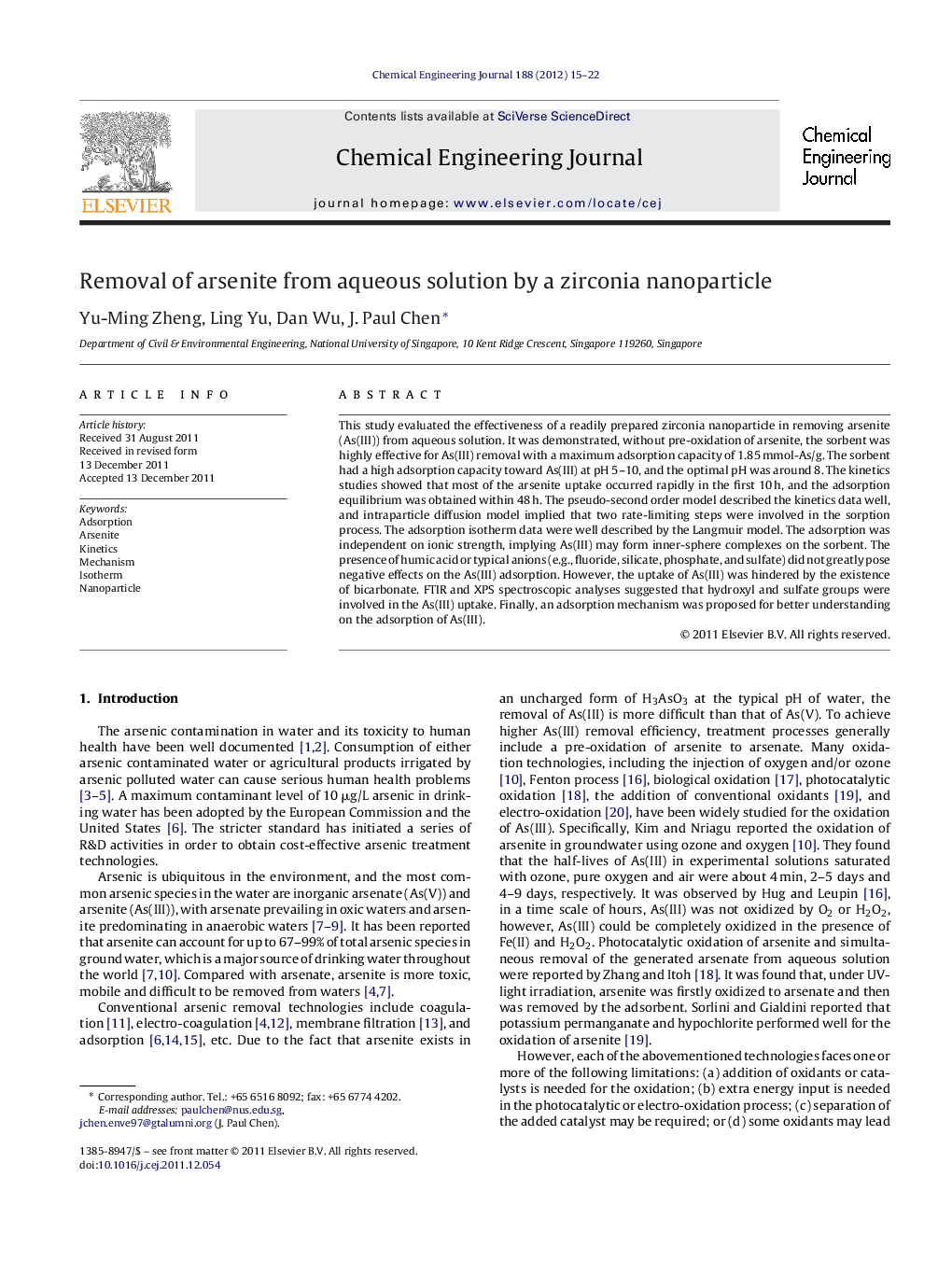| کد مقاله | کد نشریه | سال انتشار | مقاله انگلیسی | نسخه تمام متن |
|---|---|---|---|---|
| 150006 | 456442 | 2012 | 8 صفحه PDF | دانلود رایگان |

This study evaluated the effectiveness of a readily prepared zirconia nanoparticle in removing arsenite (As(III)) from aqueous solution. It was demonstrated, without pre-oxidation of arsenite, the sorbent was highly effective for As(III) removal with a maximum adsorption capacity of 1.85 mmol-As/g. The sorbent had a high adsorption capacity toward As(III) at pH 5–10, and the optimal pH was around 8. The kinetics studies showed that most of the arsenite uptake occurred rapidly in the first 10 h, and the adsorption equilibrium was obtained within 48 h. The pseudo-second order model described the kinetics data well, and intraparticle diffusion model implied that two rate-limiting steps were involved in the sorption process. The adsorption isotherm data were well described by the Langmuir model. The adsorption was independent on ionic strength, implying As(III) may form inner-sphere complexes on the sorbent. The presence of humic acid or typical anions (e.g., fluoride, silicate, phosphate, and sulfate) did not greatly pose negative effects on the As(III) adsorption. However, the uptake of As(III) was hindered by the existence of bicarbonate. FTIR and XPS spectroscopic analyses suggested that hydroxyl and sulfate groups were involved in the As(III) uptake. Finally, an adsorption mechanism was proposed for better understanding on the adsorption of As(III).
The behaviors and mechanism of arsenite adsorption onto a readily prepared zirconia nanoparticle were reported.Figure optionsDownload as PowerPoint slideHighlights
► A zirconia nanoparticle was efficient for directly arsenite removal from water.
► The sorbent had a high As(III) adsorption capacity in wide pH range of 5–10.
► Pseudo-second order and Langmuir models described the kinetics and isotherm well.
► Intraparticle diffusion model was used to determine the rate-limiting step.
► An adsorption mechanism was proposed from the spectroscopic analysis.
Journal: Chemical Engineering Journal - Volume 188, 15 April 2012, Pages 15–22